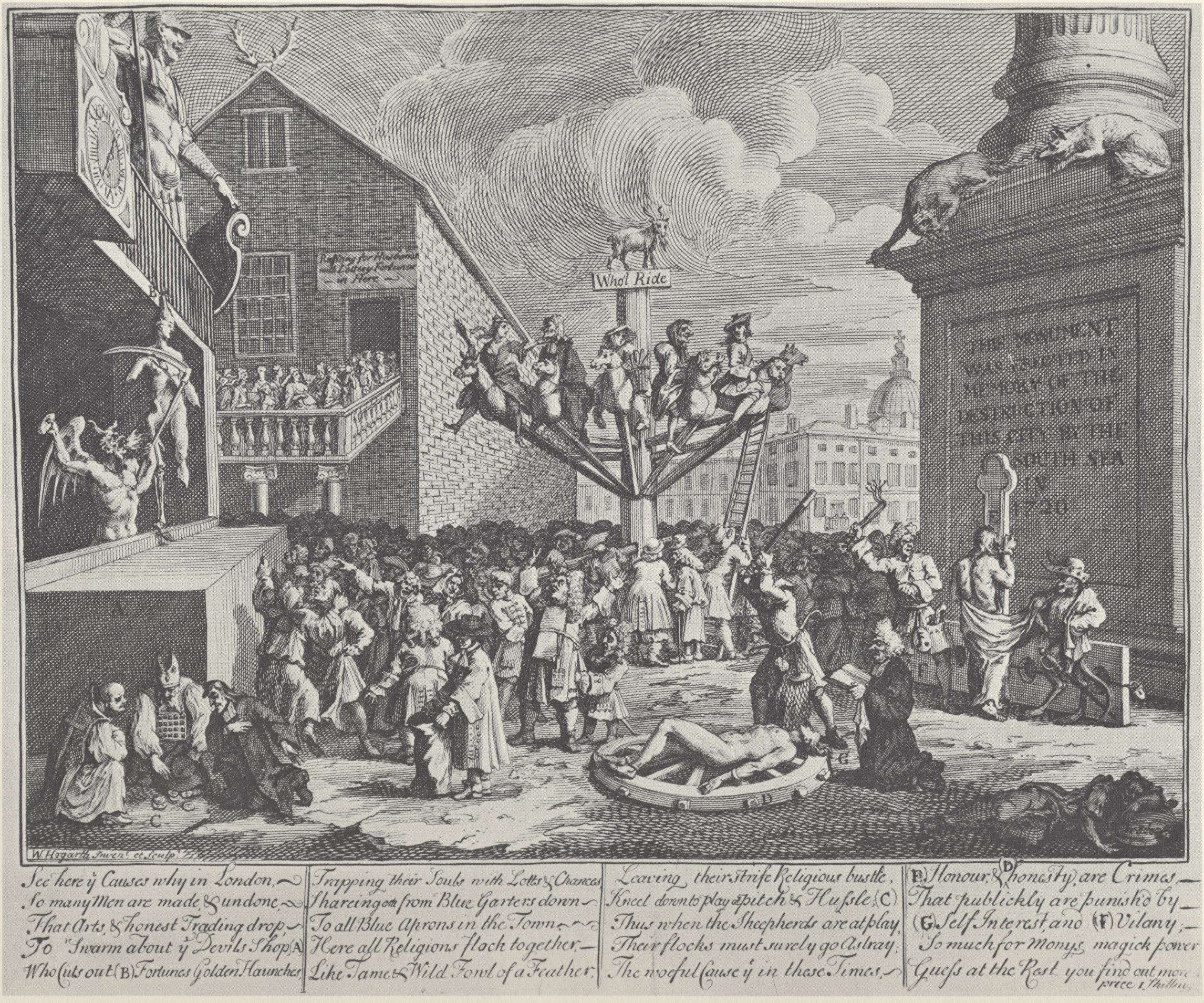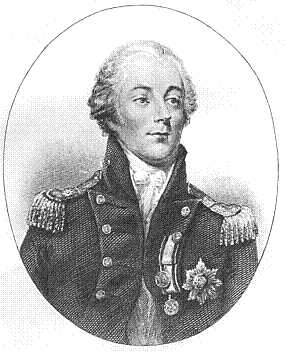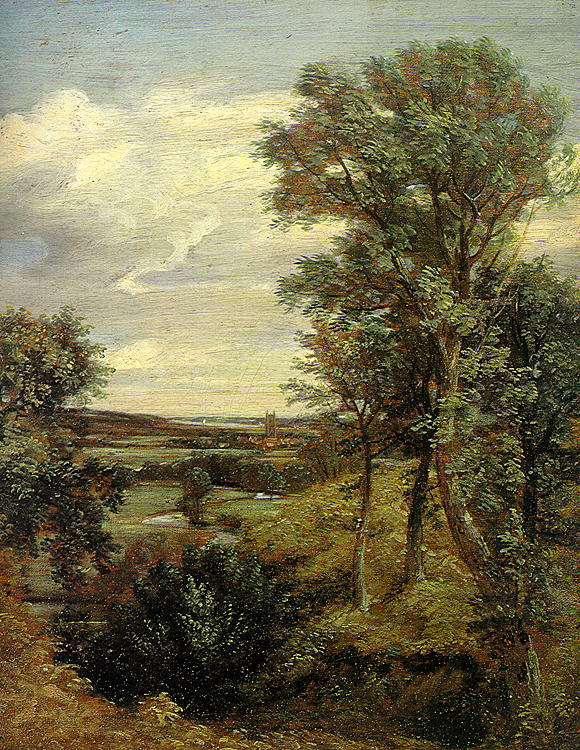|
Gainsborough's House
Gainsborough's House is the birthplace of the leading English painter Thomas Gainsborough. It is now a museum and gallery, located at 46 Gainsborough Street in Sudbury, Suffolk, England. Some of the pictures on display have been acquired with the help of the Art Fund. Overview The house is now 46 Gainsborough Street and dates back to around 1520. Thomas Gainsborough's parents, John and Mary Gainsborough, probably moved here in 1722 and the artist Thomas Gainsborough was born five years later (1727). Thomas Gainsborough, the youngest of John and Mary's nine children, lived in the house and attended Sudbury Grammar School. At 13 he went to London to further his studies training with the French painter and illustrator, Hubert-Francois Gravelot. The house remained as a private residence until 1920, after which time it had various functions including a guest house and antique shop. In 1958, Gainsborough's House Society was formed to purchase the house and establish it as a mus ... [...More Info...] [...Related Items...] OR: [Wikipedia] [Google] [Baidu] |
Aubrey Herbert
Colonel The Honourable Aubrey Nigel Henry Molyneux Herbert (3 April 1880 – 26 September 1923), of Pixton Park in Somerset and of Teversal, in Nottinghamshire, was a British soldier, diplomat, traveller, and intelligence officer associated with Albanian independence. He was twice offered the throne of Albania. From 1911 until his death he was a Conservative Member of Parliament. His eldest half-brother was George Herbert, 5th Earl of Carnarvon (1866–1923), who discovered the tomb of Tutankhamun. Origins Aubrey Herbert was born at Highclere Castle in Hampshire, the second son of Henry Herbert, 4th Earl of Carnarvon, a wealthy landowner, British cabinet minister, and Lord Lieutenant of Ireland. His mother (his father's second wife and cousin) was Elizabeth Catherine Howard (1856–1929Per inscribed brass tablet in Brushford Church) ("Elsie"), a daughter of Henry Howard of Greystoke Castle, near Penrith, Cumberland, a son of Lord Henry Howard-Molyneux-Howard, younger broth ... [...More Info...] [...Related Items...] OR: [Wikipedia] [Google] [Baidu] |
Francis Hayman
Francis Hayman (1708 – 2 February 1776) was an English painter and illustrator who became one of the founding members of the Royal Academy in 1768, and later its first librarian. Life and works Born in Exeter, Devon, Hayman begun his artistic career as a scene painter in London's Drury Lane theatre (where he also appeared in minor roles) before establishing a studio in St Martin's Lane. A versatile artist influenced by the French Rococo style, he achieved some note during the 1740s through decorative paintings executed for the supper boxes at Vauxhall Pleasure Gardens in London. Hayman was also a successful portraitist and history painter. Combining some of these, he contributed 31 pictures to a 1744 edition of Shakespeare's plays by Sir Thomas Hanmer, and later portrayed many leading contemporary actors in Shakespearean roles, including David Garrick as Richard III (1760). He also illustrated Pamela, a novel by Samuel Richardson, Milton's ''Paradise Lost'' and ''Paradis ... [...More Info...] [...Related Items...] OR: [Wikipedia] [Google] [Baidu] |
William Hogarth
William Hogarth (; 10 November 1697 – 26 October 1764) was an English painter, engraver, pictorial satirist, social critic, editorial cartoonist and occasional writer on art. His work ranges from realistic portraiture to comic strip-like series of pictures called "modern moral subjects", and he is perhaps best known for his series ''A Harlot's Progress'', ''A Rake's Progress'' and '' Marriage A-la-Mode''. Knowledge of his work is so pervasive that satirical political illustrations in this style are often referred to as "Hogarthian". Hogarth was born in London to a lower-middle-class family. In his youth he took up an apprenticeship with an engraver, but did not complete the apprenticeship. His father underwent periods of mixed fortune, and was at one time imprisoned in lieu of outstanding debts, an event that is thought to have informed William's paintings and prints with a hard edge. Influenced by French and Italian painting and engraving, Hogarth's works are mostly sat ... [...More Info...] [...Related Items...] OR: [Wikipedia] [Google] [Baidu] |
St Martin's Lane Academy
The St Martin's Lane Academy, a precursor of the Royal Academy, was organised in 1735 by William Hogarth, from the circle of artists and designers who gathered at Slaughter's Coffee House at the upper end of St Martin's Lane, London. The artistic set that introduced the Rococo style to England was centred on "Old Slaughter's" and the drawing-classes at the St. Martin's Lane Academy were inextricably linked in the dissemination of new artistic ideas in England in the reigns of George II and George III. History In Britain in the early eighteenth century there was no organised public official patronage of the arts, aside from commissions for specific projects. There was no established body to compare with the Académie royale de peinture et de sculpture that Jean-Baptiste Colbert had established in France, and no public exhibitions of recent paintings along the lines of the Paris salons, held every other year. The closest approximation to an academic life-drawing class was establis ... [...More Info...] [...Related Items...] OR: [Wikipedia] [Google] [Baidu] |
National Lottery Heritage Fund
The National Lottery Heritage Fund, formerly the Heritage Lottery Fund (HLF), distributes a share of National Lottery funding, supporting a wide range of heritage projects across the United Kingdom. History The fund's predecessor bodies were the National Land Fund, established in 1946, and the National Heritage Memorial Fund, established in 1980. The current body was established as the "Heritage Lottery Fund" in 1994. It was re-branded as the National Lottery Heritage Fund in January 2019. Activities The fund's income comes from the National Lottery which is managed by Camelot Group. Its objectives are "to conserve the UK's diverse heritage, to encourage people to be involved in heritage and to widen access and learning". As of 2019, it had awarded £7.9 billion to 43,000 projects. In 2006, the National Lottery Heritage Fund launched the Parks for People program with the aim to revitalize historic parks and cemeteries. From 2006 to 2021, the Fund had granted £254million ... [...More Info...] [...Related Items...] OR: [Wikipedia] [Google] [Baidu] |
National Trust For Places Of Historic Interest Or Natural Beauty
The National Trust, formally the National Trust for Places of Historic Interest or Natural Beauty, is a charity and membership organisation for heritage conservation in England, Wales and Northern Ireland. In Scotland, there is a separate and independent National Trust for Scotland. The Trust was founded in 1895 by Octavia Hill, Sir Robert Hunter and Hardwicke Rawnsley to "promote the permanent preservation for the benefit of the Nation of lands and tenements (including buildings) of beauty or historic interest". It was given statutory powers, starting with the National Trust Act 1907. Historically, the Trust acquired land by gift and sometimes by public subscription and appeal, but after World War II the loss of country houses resulted in many such properties being acquired either by gift from the former owners or through the National Land Fund. Country houses and estates still make up a significant part of its holdings, but it is also known for its protection of wild lands ... [...More Info...] [...Related Items...] OR: [Wikipedia] [Google] [Baidu] |
De Saumarez Baronets
Baron de Saumarez, on the Island of Guernsey, is a title in the Peerage of the United Kingdom. It was created on 15 September 1831 for the prominent naval commander Admiral Sir James Saumarez, 1st Baronet. He had already been created a Baronet, of Guernsey, on 13 June 1801. Lord de Saumarez was succeeded by his eldest son James, the second Baron, a clergyman. James was succeeded by his younger brother, John, the third Baron, whose son, the fourth Baron, was a career diplomat who bought the family estate at Castel, Guernsey, from his father, the third Baron, who wished to sell it. However, by marrying an heiress, the fourth Baron also brought estates in Suffolk into the family. The family seat was at Castel in Guernsey from the time of the first baron until the fourth Baron died there in 1937. After the German occupation of the Channel Islands during the Second World War, the later barons lived mostly at their Shrubland Park estate, near Ipswich, in Suffolk. the titles are h ... [...More Info...] [...Related Items...] OR: [Wikipedia] [Google] [Baidu] |
Aureole (horse)
Aureole (1950–1974) was a British Thoroughbred racehorse and sire who was owned by Queen Elizabeth II. In a career that lasted from August 1952 until July 1954, he ran fourteen times and won eleven races. As a three-year-old in 1953, he won the Lingfield Derby Trial before finishing second to Pinza in both the Derby and the King George VI and Queen Elizabeth Stakes. He reached his peak as a four-year-old in 1954 when he won his last four races: the Victor Wild Stakes at Kempton, the Coronation Cup at Epsom, the Hardwicke Stakes at Royal Ascot and Britain's most prestigious all-aged race, the King George VI and Queen Elizabeth Stakes. After retiring from racing he was sent to stud, where he became a successful sire of winners. Background Aureole was a bright chestnut horse with a white blaze and three white socks, bred by King George VI. When the King died in 1952, the ownership of the unraced two-year-old colt passed to his daughter, Queen Elizabeth II. Aureole was sired by ... [...More Info...] [...Related Items...] OR: [Wikipedia] [Google] [Baidu] |
Dedham, Essex
Dedham is a village within the borough of Colchester in northeast Essex, England, on the River Stour and the border of Essex and Suffolk. The nearest town to Dedham is the small market town of Manningtree. Governance Dedham is part of the electoral ward called Dedham and Langham. The population of this ward at the 2011 Census was 2,943. Geography Dedham is frequently rated as containing some of England's most beautiful Lowland landscape, most particularly the water meadows of the River Stour, which passes along the northern boundary of the village forming the boundary between Essex and Suffolk. Dedham has a central nuclear settlement around the Church and the junction of Mill Lane and the High Street (part of the B1029). Connected to Dedham are the hamlets of The Heath and Lamb Corner. The village forms a key part of the Dedham Vale. History Early documents record the name as Diddsham, presumably for a family known as Did or Didd. Dedham Classis In 1582–1587, a schism ... [...More Info...] [...Related Items...] OR: [Wikipedia] [Google] [Baidu] |
Alfred Munnings
Sir Alfred James Munnings, (8 October 1878 – 17 July 1959) was known as one of England's finest painters of horses, and as an outspoken critic of Modernism. Engaged by Lord Beaverbrook's Canadian War Memorials Fund, he earned several prestigious commissions after the Great War that made him wealthy. Between 1912 and 1914 he was a member of the Newlyn School of artists. His work was part of the art competitions at the 1928 Summer Olympics, the 1932 Summer Olympics, and the 1948 Summer Olympics. Munnings was president of the Royal Academy of Arts from 1944 until his death. Biography Alfred Munnings was born on 8 October 1878 at Mendham Mill, Mendham, Suffolk, across the River Waveney from Harleston in Norfolk to Christian parents. His father was the miller and Alfred grew up surrounded by the activity of a busy working mill with horses and horse-drawn carts arriving daily. After leaving Framlingham College at the age of fourteen he was apprenticed to a Norwich printe ... [...More Info...] [...Related Items...] OR: [Wikipedia] [Google] [Baidu] |
Lord Lieutenant Of Suffolk
This is a list of people who have served as Lord-Lieutenant of Suffolk. Since 1642, all Lord Lieutenants have also been Custos Rotulorum of Suffolk. Lord Lieutenants of Suffolk * Sir Anthony Wingfield 1551–1552 ''jointly with'' *? 1551–? *Thomas Radclyffe, 3rd Earl of Sussex 1557–1583 *Thomas Wentworth, 2nd Baron Wentworth 1561 *Henry Carey, 1st Baron Hunsdon 3 July 1585 – 23 July 1596 *''vacant'' *Thomas Howard, 1st Earl of Suffolk 3 July 1605– 28 May 1626 *Theophilus Howard, 2nd Earl of Suffolk 15 June 1626 – 3 June 1640 *James Howard, 3rd Earl of Suffolk 16 June 1640 – 1642 ''jointly with'' * Sir Thomas Jermyn 16 June 1640 – 1642 *''Interregnum'' *James Howard, 3rd Earl of Suffolk 25 July 1660 – 12 March 1681 *Henry Bennet, 1st Earl of Arlington 12 March 1681 – 6 May 1685 *Henry FitzRoy, 1st Duke of Grafton 6 May 1685 – 28 March 1689 *Charles Cornwallis, 3rd Baron Cornwallis 28 March 1689 – 29 April 1698 *Charles Cornwallis, 4th Baron Cornwallis 14 Ju ... [...More Info...] [...Related Items...] OR: [Wikipedia] [Google] [Baidu] |





